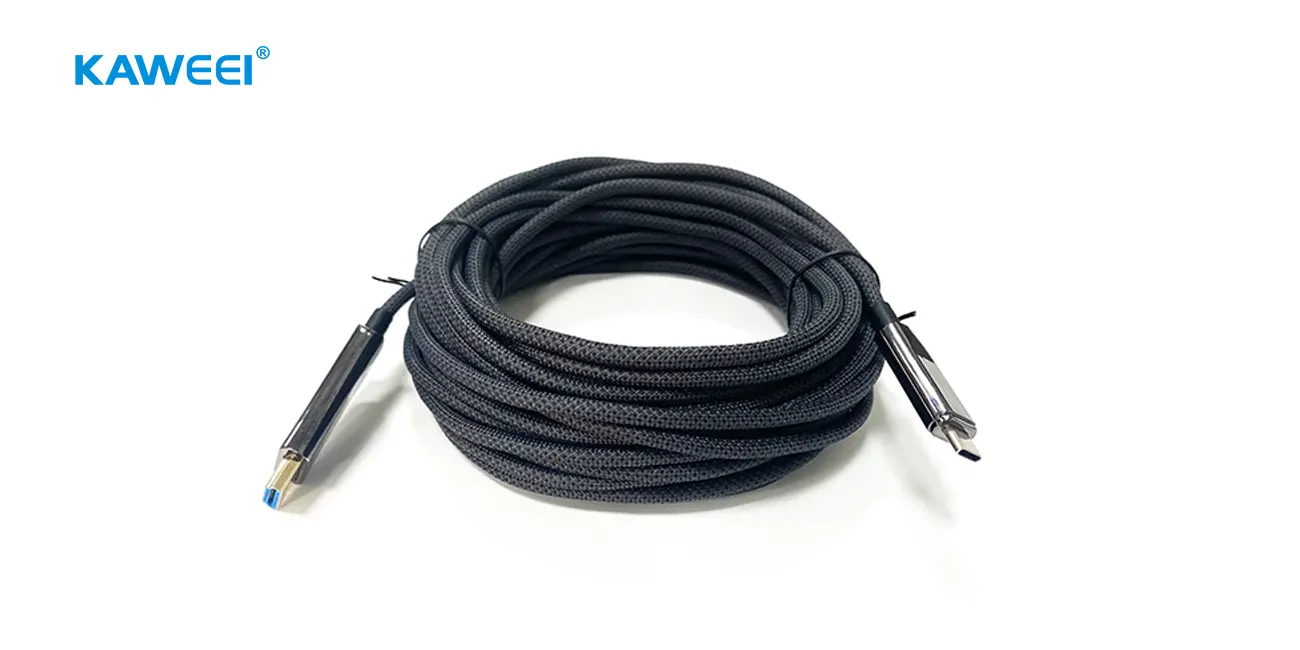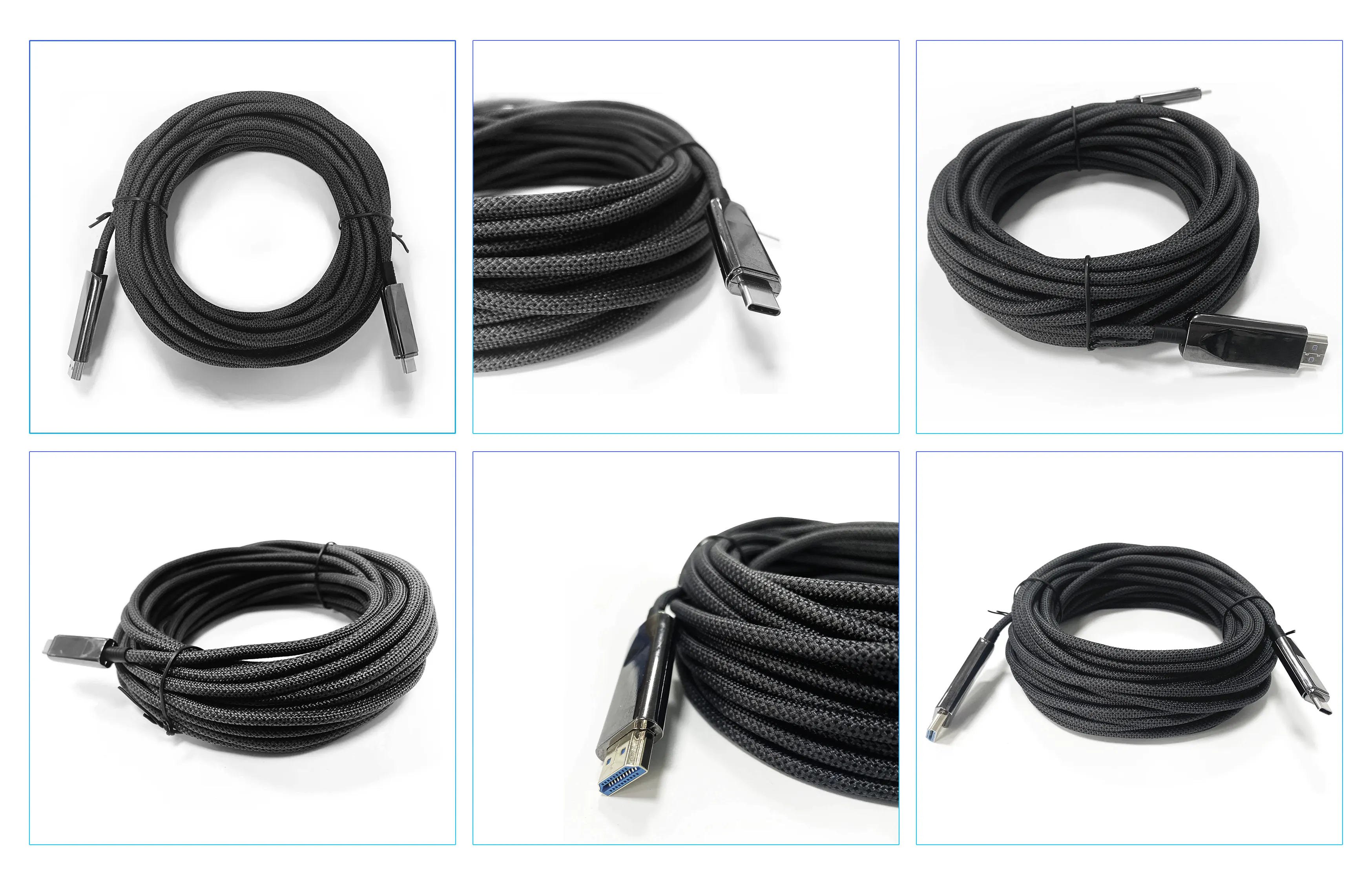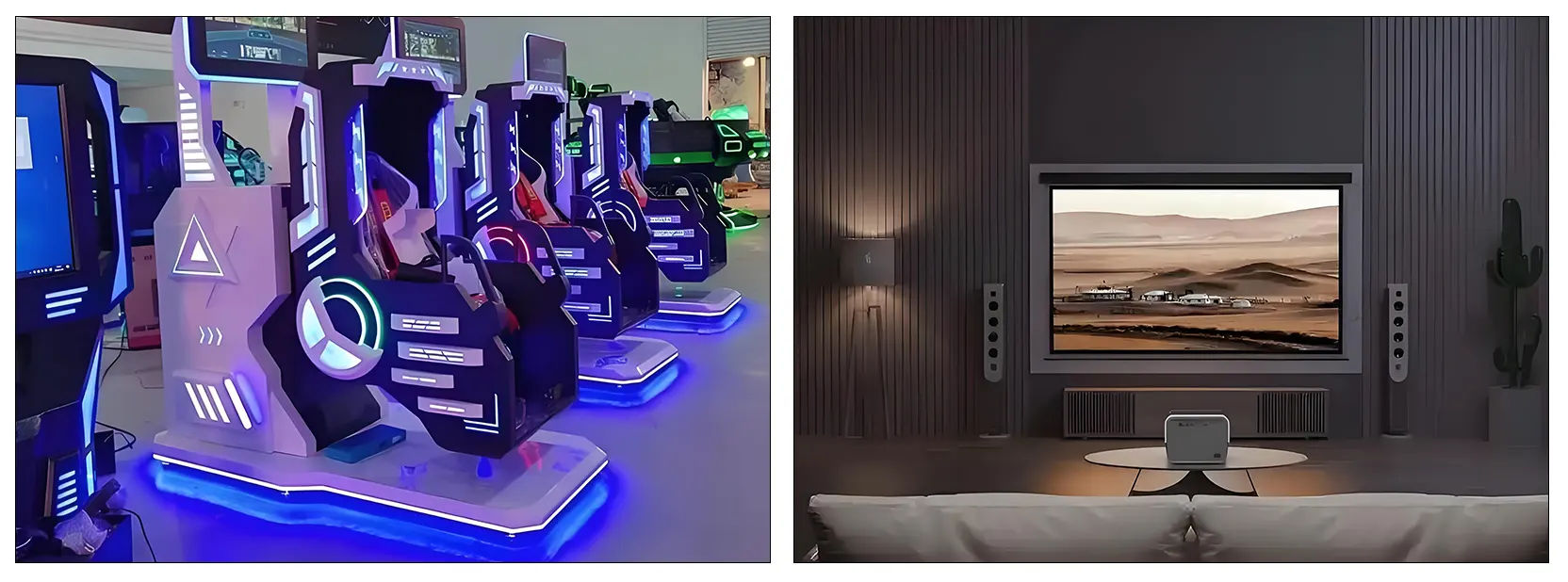
By quanyu lee
2025-03-20 01:43:50
HDMI Optical Fiber Cable
HDMI fiber optic cable is a high-performance cable that combines HDMI interface and fiber optic transmission technology, mainly used for transmitting high-definition audio and video signals. Unlike traditional HDMI copper cables, it uses fiber optic as the transmission medium to transmit data through optical signals rather than electrical signals, resulting in significant differences in performance and application scenarios.
Core Features and Working Principles
Fiber optic transmission principle:
- Photoelectric conversion: Micro photoelectric conversion modules are built-in at both ends of the cable. The transmitting end converts HDMI electrical signals into optical signals and transmits them through optical fibers; The receiving end then converts the optical signal back into an electrical signal for use by the display device.
- No electromagnetic interference: Optical signals are not affected by electromagnetic interference (EMI) and radio frequency interference (RFI), making them suitable for complex electromagnetic environments.
Significant advantages:
- Ultra long distance transmission: Supports 4K/60Hz signal transmission up to 300 meters or more (copper cables usually do not exceed 15 meters), with no signal attenuation.
- Ultra high bandwidth: Supports HDMI 2.1 standard and can transmit 8K@60Hz The 4K@120Hz Waiting for high-resolution and high refresh rate content.
- Lightweight design: The wire body is thinner and softer, making it easy to wire through pipes, especially suitable for long-distance concealed installation.

The core use of HDMI fiber optic cable with Type-C interface
By combining the Type-C interface with HDMI fiber optic cable, the following functions can be achieved:
1. Device direct connection and simplified adaptation
Mobile phone/laptop directly connected to large screen: Devices such as MacBook and Android flagship phone that support Type-C interface can be directly connected to display devices such as TV and projector through Type-C to HDMI fiber optic cable, without the need for additional converters, achieving 4K/8K ultra high definition video transmission.
Reverse power supply function: Some HDMI fiber optic cables with Type-C interfaces support USB PD protocol, which can provide up to 100W of charging power for connected devices such as smartphones and tablets, while transmitting video signals, reducing the number of cables by 28.
2. Long distance high fidelity transmission
Anti interference and low latency: Fiber optic transmission can avoid electromagnetic interference, and HDMI fiber optic cable with Type-C interface can stably transmit within a distance of 300 meters 8K@60Hz perhaps 4K@120Hz Signal meets the demanding requirements for image quality and real-time performance in scenarios such as esports and medical imaging.
Professional audio and video production: Supports high dynamic range formats such as HDR and Dolby Vision, and connects cameras and editing workstations through Type-C interfaces to achieve lossless signal feedback and monitoring.
3. Multi functional expansion and compatibility
One line multi-purpose: The HDMI fiber optic cable with full-featured Type-C interface can simultaneously transmit video, audio, and data (such as USB 3.1), and supports reverse charging, making it suitable for multi device collaborative office or home entertainment centers.
Cross device compatibility: Compatible with Type-C and HDMI dual ecosystem devices (such as Switch game consoles and VR headsets), solving compatibility issues caused by interface limitations of traditional copper cables.
Applicable scenarios
- Home theater: Connect distant projectors, televisions, and sound systems to avoid image quality loss due to distance.
- Commercial display: Long distance multi screen synchronous display in shopping malls, exhibition halls, and conference rooms.
- Professional audiovisual production: requires high fidelity, delay free transmission in monitoring rooms or studios.
- Gaming and VR: Connecting high-end gaming devices with low latency and high refresh rate requirements.

Echnical advantages compared to traditional solutions
Scene |
Type-C+HDMI Fiber Optic Cable Solution |
Traditional converter + copper cable solution |
|
Transmission distance |
No attenuation within 300 meters |
Usually<15 meters (4K signal is prone to attenuation) |
|
Functional integration degree |
Front line integrated video, charging, and data transmission |
Multiple cables and converters are required |
|
Anti-interference ability |
Fiber optic without electromagnetic interference |
Copper cables are susceptible to interference (long-distance) |
Summary
HDMI fiber optic cable is an ideal choice for long-distance, high fidelity transmission, especially suitable for professional audio and video and complex cabling environments, but traditional copper cables are more cost-effective in short distance scenarios. When purchasing, it is necessary to weigh the transmission distance, resolution, and budget according to actual needs.



